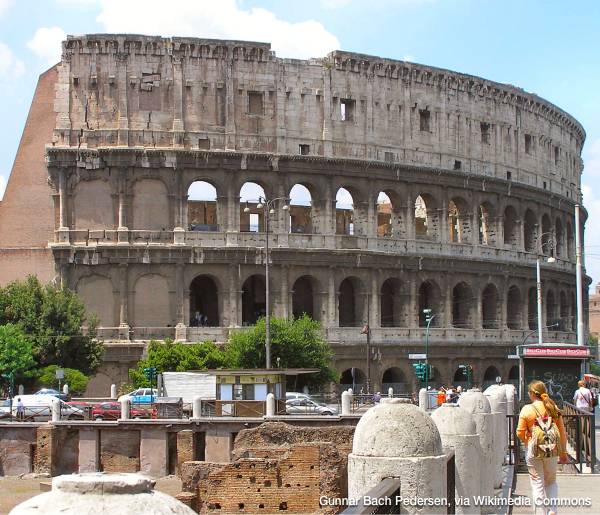Colosseum

This famous amphitheater at the heart of Rome, completed in A.D. 80, was the largest structure of its kind in the Roman world and a masterful feat of architecture. This constellation symbolizes Italy's contributions to Fermi science. The tracker subsystem of Fermi's Large Area Telescope was assembled there, and Italian scientists continue to be closely involved with the instrument and the science it produces.
Most of the visible matter in the universe takes the form of plasma, one of the fundamental states of matter, like solid, liquid and gas. In the plasma state, matter is so hot that the nuclei of atoms can no longer hold on to their electrons, forming a soup of electrically charged particles. Everyday examples of plasmas include the glowing gases in fluorescent light tubes and neon signs. More distant examples include the Sun and stars, glowing gas clouds in interstellar space, and the accretion disks swirling around black holes.
When the electrically charged particles in plasmas move, they create an electric current, which in turn generates magnetic fields. In many places, such as the surface of the Sun, plasmas move quickly and erratically. The magnetic fields generated by this motion can become twisted and tangled, storing vast amounts of energy in the process. Magnetic fields can suddenly release this stored energy through a process called reconnection. The burst of energy heats the plasma and accelerates its electrons, protons, and nuclei to speeds close to the speed of light, the fastest possible.
On the Sun, reconnection creates solar flares and other phenomena, even launching plasma toward Earth. Particles accelerated by these events interact with the solar atmosphere, producing gamma rays observable with Fermi. Fermi scientists have found some indication that reconnection occurs in supernova remnants and in jets firing from active galaxies, although this is still being investigated.